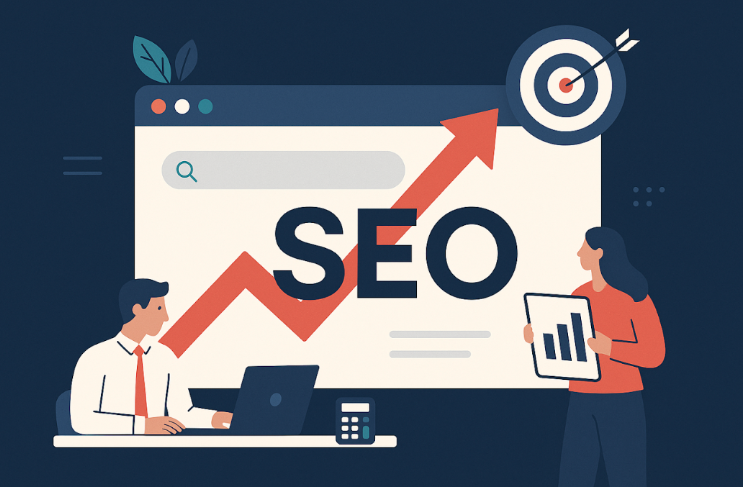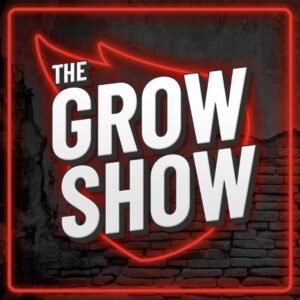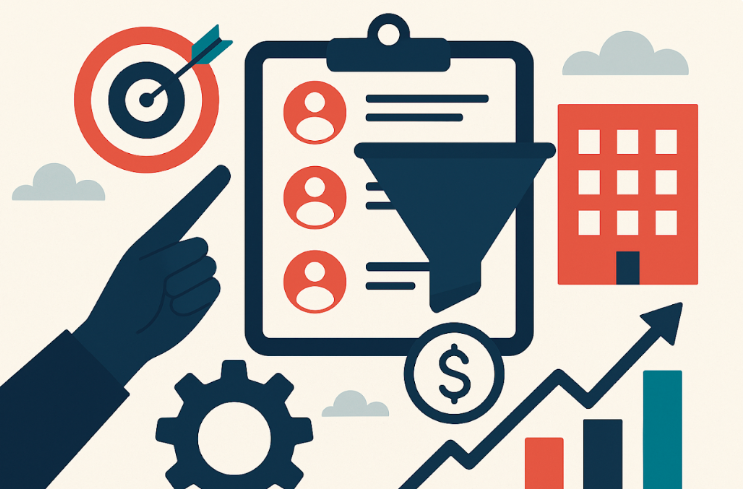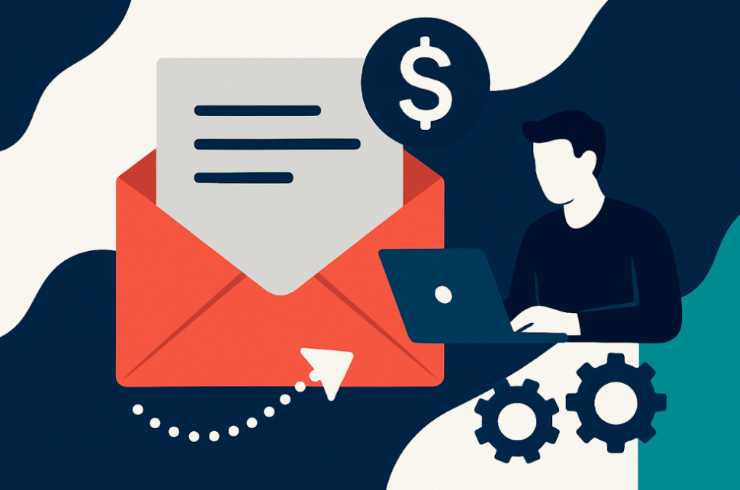A sales pipeline is more than just a visual representation of potential deals—it’s a strategic framework that guides prospects through the customer journey, from initial contact to closing. Effectively managing this pipeline is crucial for businesses that enhance conversion rates and deliver an exceptional buyer experience that drives sustainable growth.
Contents
- 1 What is a Sales Pipeline?
- 2 What are the Stages of a Sales Pipeline?
- 3 What are the Benefits of a Well-Managed Sales Pipeline?
- 4 What are the Best Practices for Optimizing Your Sales Pipeline?
- 5 What are the Most Common Challenges in Sales Pipeline Management, and How Can You Overcome Them?
- 6 Wrapping Up
What is a Sales Pipeline?
A sales pipeline is a systematic approach to tracking and managing leads as they progress through various stages of the sales process. It acts as a roadmap for sales teams, allowing them to visualize where each prospect stands in their journey toward becoming a customer.
Typically, the sales pipeline is divided into several key stages, each representing a step in the buyer’s journey. These stages can vary by industry and organization, but generally include lead generation, qualification, proposal, negotiation, and closing.
Why are Sales Pipelines Important?
A well-defined sales pipeline is essential for several reasons:
- Clarity and Focus: It provides sales teams with a clear view of where each lead stands, enabling them to prioritize efforts on the most promising opportunities.
- Forecasting and Resource Allocation: By analyzing the pipeline’s current status, businesses can anticipate revenue and allocate resources more effectively.
- Accountability: Tracking progress through the pipeline fosters account ownership among team members, highlighting areas for improvement.
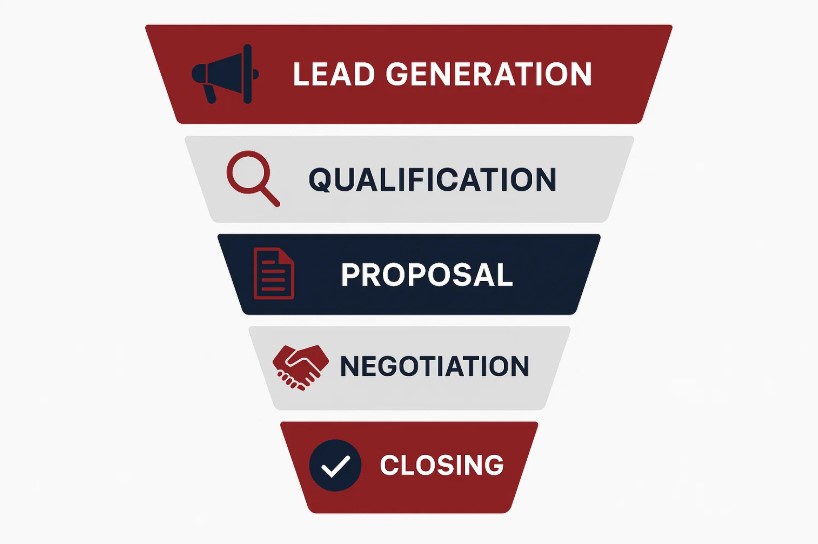
What are the Stages of a Sales Pipeline?
The sales pipeline has five key stages: lead generation, qualification, proposal, negotiation, and closing. Understanding these stages is fundamental to managing them effectively. Each stage represents a different point in the sales process, and recognizing them can help sales professionals tailor their approach to meet potential customers’ needs.
Stage 1. Lead Generation
The first stage of the sales pipeline is all about increasing your probability of conversion before the pitch begins. It starts with identifying potential customers through channels like networking, social media, content marketing, and referrals. But the real goal isn’t just to capture attention; it’s to engage prospects already looking for solutions to challenges your product or service is built to solve.
Effective lead generation strategies target the root of your audience’s pain points and offer immediate, relevant value. When your outreach speaks directly to real business problems through email marketing, cold email, or even cold calling, you elevate the chance that a lead enters your pipeline with intent, not just interest.
Stage 2. Qualification
Once leads are generated, the next step is assessing whether they are a good fit for the product or service. Sales teams often use criteria such as Budget, Authority, Need, and Timeline (BANT) to determine a lead’s viability, asking the right questions early on to prioritize leads worth pursuing.
Qualifying leads helps sales professionals focus their efforts on those most likely to convert, ensuring efficient use of time and resources. Employing scoring systems can further enhance this process by assigning values to leads based on engagement levels and interactions with the brand.
Stage 3. Proposal
After leads are qualified, the sales team transitions into presenting tailored solutions that align with the prospect’s specific needs and business challenges. This stage often includes customized proposals, live demos, or consultative conversations that clearly outline how the product or service delivers value.
At this point, many prospects will be ready to request a quote, signaling strong interest and intent to move forward. A well-crafted proposal can significantly influence the decision-making process. Including testimonials, case studies, or performance benchmarks builds credibility and demonstrates how similar clients have achieved success, often the exact experience your next buyer is looking for.
Stage 4. Negotiation
During the negotiation stage, both parties discuss terms, pricing, and any potential objections. Effective communication and relationship-building skills are crucial here. Sales professionals must be prepared to address concerns and find mutually beneficial solutions.
Successful negotiations often require flexibility and a deep understanding of the prospect’s needs. Building trust during this phase can lead to a smoother closing process.
Stage 5. Closing
The closing stage is where the deal is finalized. It involves signing contracts, processing payments, and ensuring all parties are aligned on expectations. A successful close secures the sale and sets the foundation for a long-term account relationship.
Sales professionals should celebrate this milestone, reflecting their hard work and dedication throughout the sales process. However, closing is not the end; it’s also an opportunity to gather feedback and foster customer loyalty.
Download our free Sales Pipeline Management Checklist—your step-by-step guide to building a high-performing pipeline that drives real revenue. Whether you’re optimizing follow-up cadences or improving forecasting, this checklist ensures no stage gets overlooked.
What are the Benefits of a Well-Managed Sales Pipeline?
A well-managed sales pipeline can enhance sales forecasting, improve process efficiency, and increase accountability. Effectively managing a sales pipeline is about creating a high-performance, high-visibility system that drives efficiency, accountability, and smarter forecasting across your sales organization. When executed well, your pipeline becomes a predictive engine that supports revenue growth and team development.
Enhanced Forecasting
A well-structured sales pipeline provides valuable, real-time insights into future revenue opportunities. By consistently tracking the progression of leads through each pipeline stage, sales leaders can generate accurate forecasts that inform budgeting, staffing, and strategy.
Imagine your team is preparing for Q4, and your sales manager pulls a report from your CRM showing that 35% of opportunities in the proposal stage historically convert within 30 days. With 40 high-value opportunities sitting in that stage, leadership can forecast potential revenue and schedule additional support to keep deals moving.
Improved Efficiency
Sales pipelines bring order to the chaos of opportunity management. Rather than sifting through spreadsheets or sticky notes, sales professionals can see exactly where to focus their energy. This prioritization is key for improving efficiency and shortening sales cycles.
With automation tools embedded into platforms like Salesforce or HubSpot, you can reduce manual tasks such as follow-up emails or meeting scheduling. For instance, integrating Chili Piper with your pipeline allows leads to schedule meetings automatically, turning a friction point into a streamlined process and freeing up reps to focus on expert-level selling activities.
Increased Accountability
A transparent sales pipeline creates a culture of ownership. Each team member sees not only their own metrics but also how their performance contributes to the bigger picture. This clarity builds accountability and promotes continuous improvement.
Example:
Consider a sales meeting where each rep is asked to walk through their pipeline: what’s moving, what’s stuck, and what their next steps are. When team members know their metrics will be reviewed weekly, it naturally motivates stronger pipeline hygiene, keeping opportunities up to date and calls to action sharp.
Sales managers can also use the pipeline to coach more effectively. If a rep consistently loses deals in the proposal stage, it’s a clear reason to refine pitch materials or provide additional training. The pipeline becomes more than a tracker; it’s a coaching tool, a performance barometer, and a shared source of truth that helps reps sharpen their expert instincts.
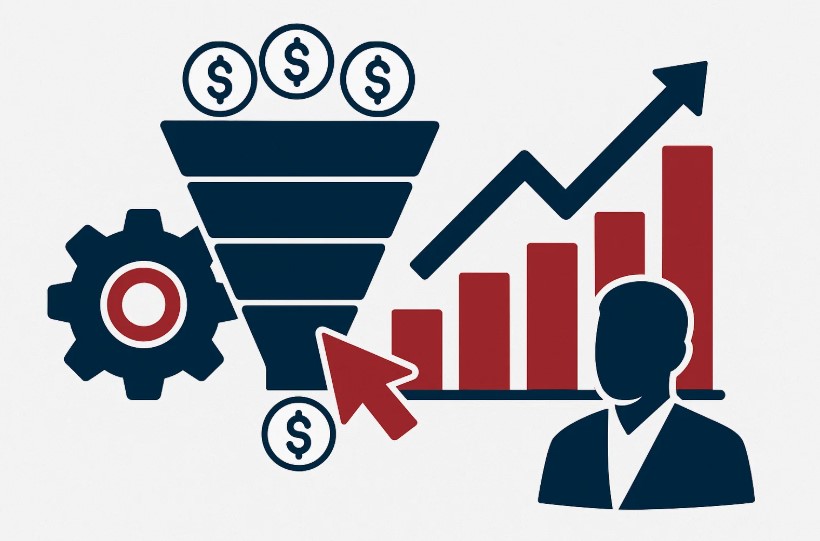
What are the Best Practices for Optimizing Your Sales Pipeline?
If you want to optimize your sales pipeline, start by focusing on three high-impact levers: consistent refinement, strategic use of technology, and meaningful relationship-building. These aren’t just tactics; they’re the difference between a pipeline that flatlines and one that fuels aggressive, sustainable growth.
Regularly Review and Update
Your sales pipeline is not a set-it-and-forget-it asset. Just as your buyers’ needs evolve and market conditions shift, your pipeline should be continuously reviewed and refined to reflect real-time business dynamics.
Regular pipeline reviews—whether weekly, bi-weekly, or monthly—help identify stalled deals, highlight stages with consistent drop-off, and reveal gaps in lead qualification. These reviews also create opportunities to reallocate resources, adjust tactics, and align sales and marketing.
Pro Tip:
Use pipeline reviews as a coaching moment, not just a reporting exercise. Empower your sales managers to identify not only the “what” but also the “why” behind performance patterns, then support reps with actionable feedback.
Utilize Technology
A modern sales pipeline should run on more than spreadsheets. Smart technology integration (especially CRM systems) streamlines management, automates redundant tasks, and empowers data-driven decision-making.
Technology enables visibility, consistency, and scalability. Tools like Salesforce, HubSpot, or Zoho can provide sales reps with real-time dashboards, automated reminders, and lead scoring, allowing them to focus on high-priority activities that move the needle.
Pro Tip:
A CRM is only as good as the data entered into it. Build onboarding and continuing education programs to ensure every team member knows how to maximize the tools at their disposal.
Read More: Using Your CRM for Effective Lead Gen
Focus on Relationship Building
Automation might handle tasks, but trust closes deals. The most successful pipelines are powered by genuine relationships built through strategic, empathetic, and personalized engagement.
Relationship-driven sales not only increase close rates but also improve customer lifetime value (CLV), reduce churn, and generate referrals. Buyers want to feel seen, understood, and valued—not pushed through a transactional funnel.
For example, let’s say two reps are pursuing similar-sized prospects. Rep A pushes hard for the close after the first demo. Rep B lends a helping hand and follows up with a personalized video message, shares a case study relevant to the prospect’s industry, and checks in with a helpful article about a challenge the client mentioned. Unsurprisingly, Rep B’s prospect converts and becomes a long-term advocate.
Pro Tip:
Encourage your team to connect beyond the sale. Have reps send congratulatory notes on funding announcements or share industry trends they believe the prospect would benefit from. These moments build equity and differentiate your brand.
What are the Most Common Challenges in Sales Pipeline Management, and How Can You Overcome Them?
The most common challenges in sales pipeline management include lead overload, inconsistent follow-up, and lack of visibility. Each can stall deals, waste resources, and undermine forecasting accuracy. But the good news is that these roadblocks are entirely solvable with the right systems, tools, and strategies in place.
Lead Overload
The Challenge:
When marketing is firing on all cylinders, it’s easy to overwhelm your sales team with too many leads to handle effectively. This “quantity over quality” issue results in missed opportunities, rushed outreach, and declining close rates. Reps end up wasting time on cold or unqualified leads while high-value prospects slip through the cracks.
The Solution:
Implement a lead scoring system to prioritize the right opportunities. By ranking leads based on fit (e.g., company size, industry, budget) and behavior (e.g., email engagement, page views, content downloads), your team can focus on the top 20% of leads most likely to convert.

Inconsistent Follow-Up
The Challenge:
Most B2B deals don’t close after the first call, or even the third. But when follow-ups are delayed, disorganized, or forgotten altogether, leads cool off quickly. Inconsistency erodes trust, allows competitors to swoop in, and stalls pipeline velocity.
The Solution:
Build a structured, automated follow-up cadence. Tools like CRM-integrated workflows can send personalized emails, reminders, and nurture content triggered by user behavior. This guarantees no prospect gets left behind, even if your reps manage dozens of open opportunities.
Lack of Visibility
The Challenge:
If sales managers and reps can’t see where deals stand, they can’t coach effectively, forecast accurately, or allocate resources wisely. Lack of visibility into pipeline health often results in missed targets, duplicated efforts, and a reactive, rather than proactive, sales culture.
The Solution:
Invest in real-time reporting and visualization tools. Dashboards that display pipeline metrics (such as stage-by-stage conversion rates, deal size averages, and close timelines) empower sales leaders to make data-driven decisions and reps to stay accountable.
Wrapping Up
A well-built sales pipeline is a revenue engine if built for success. By understanding each stage, leveraging best practices, and embracing the right tools, your team can turn more leads into closed deals faster, while optimizing every touchpoint of the customer journey.
As buyer behavior evolves, so should your pipeline. Staying agile, data-driven, and focused on relationships will keep your sales strategy sharp and your pipeline full.
Ready to Take Your Sales Pipeline to the Next Level?
At Abstrakt Marketing Group, we don’t just optimize pipelines—we build B2B growth engines. Whether you need better lead quality, a tighter outreach strategy, or a full-funnel partner, our team is here to help you convert with confidence.
Learn more about how our B2B appointment setting services can drive measurable results together.

Madison Hendrix
Madison has worked in SEO and content writing at Abstrakt for over 5 years and has become a certified lead generation expert through her hours upon hours of research to identify the best possible strategies for companies to grow within our niche industry target audiences. An early adopter of AIO (A.I. Optimization) with many organic search accolades - she brings a unique level of expertise to Abstrakt providing helpful info to all of our core audiences.
- Madison Hendrix#molongui-disabled-link
- Madison Hendrix#molongui-disabled-link
- Madison Hendrix#molongui-disabled-link
- Madison Hendrix#molongui-disabled-link
